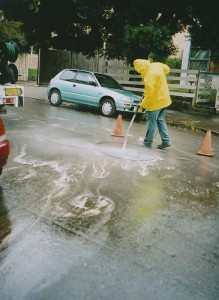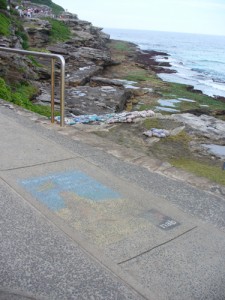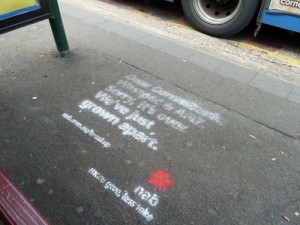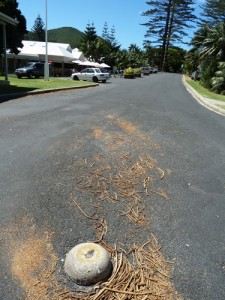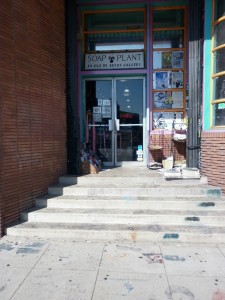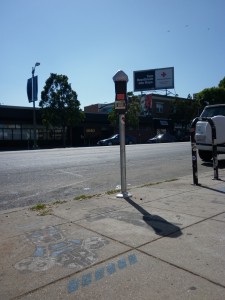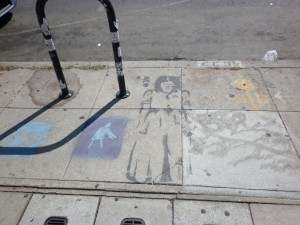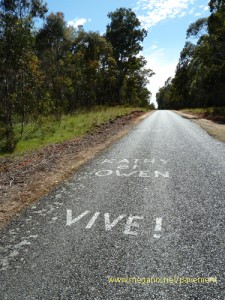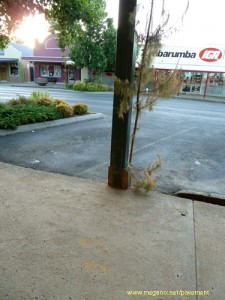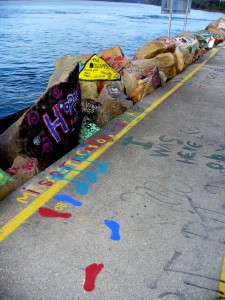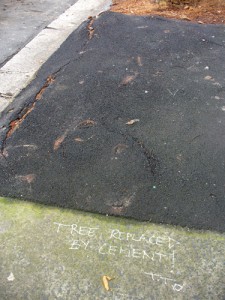Here is one from the archives. Taken around 2004, it shows a graffiti removal contractor washing away a large painted message from a street in Stanmore (Sydney). It had read ‘Kylie is a dog’. The contractor told me he had been engaged by Marrickville Council and he supposed someone must have complained about it. By contrast, a hand-painted advertisement for the band ‘Vaticide’, done just a few metres up the road at around the same time, was left there for years and even got retouched at one stage.
Marrickville Council has a ‘moderate’ attitude to graffiti and limited resources to do anything about it anyway. With stuff written on the ground, unless it is in a high profile public place, rangers generally leave it wear itself away except if they find it particularly offensive of if someone complains about it.
Still, marking public surfaces, including roads and footpaths, is technically illegal in most places. One poor Brisbane citizen found this out just recently when he was prosecuted for trying to cover over a penis that had been painted on the road by someone else. The news item in the Courier Mail said that because he pleaded guilty he was only required to pay $100 of the clean-up bill plus a $300 fine!
Also in the What Is The World Coming To Department, here is another news item, this time from Melbourne. It caught my eye because it is about life in the street, although it doesn’t have anything to do with graffiti. ABC News reported that a man was arrested for taking a vacuum cleaner from a hard rubbish collection. Police said that stealing from a nature strip is considered theft of council property.
Where I come from, riffling through other people’s throw-out piles is called Neighbourhood Recycling.
